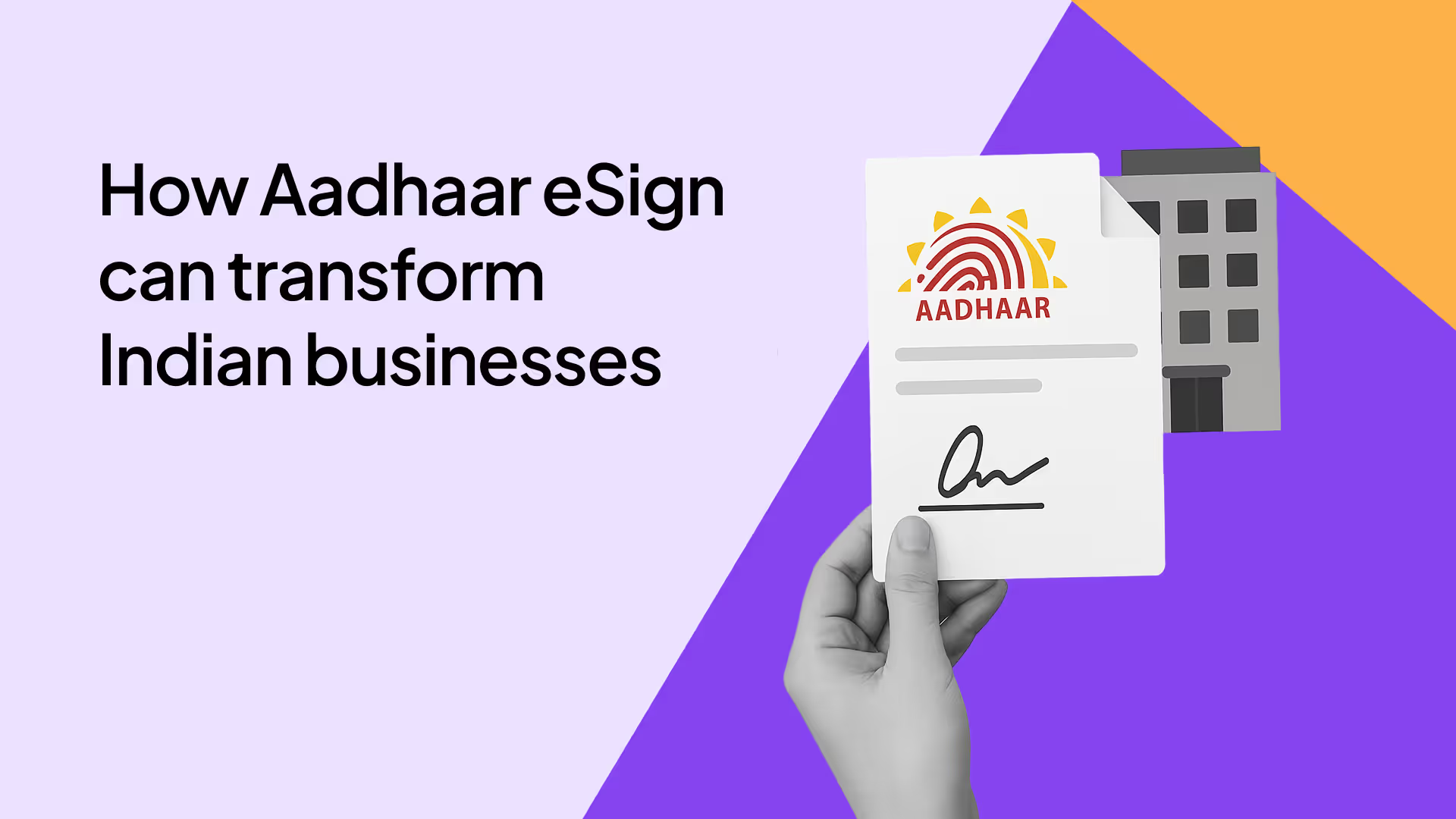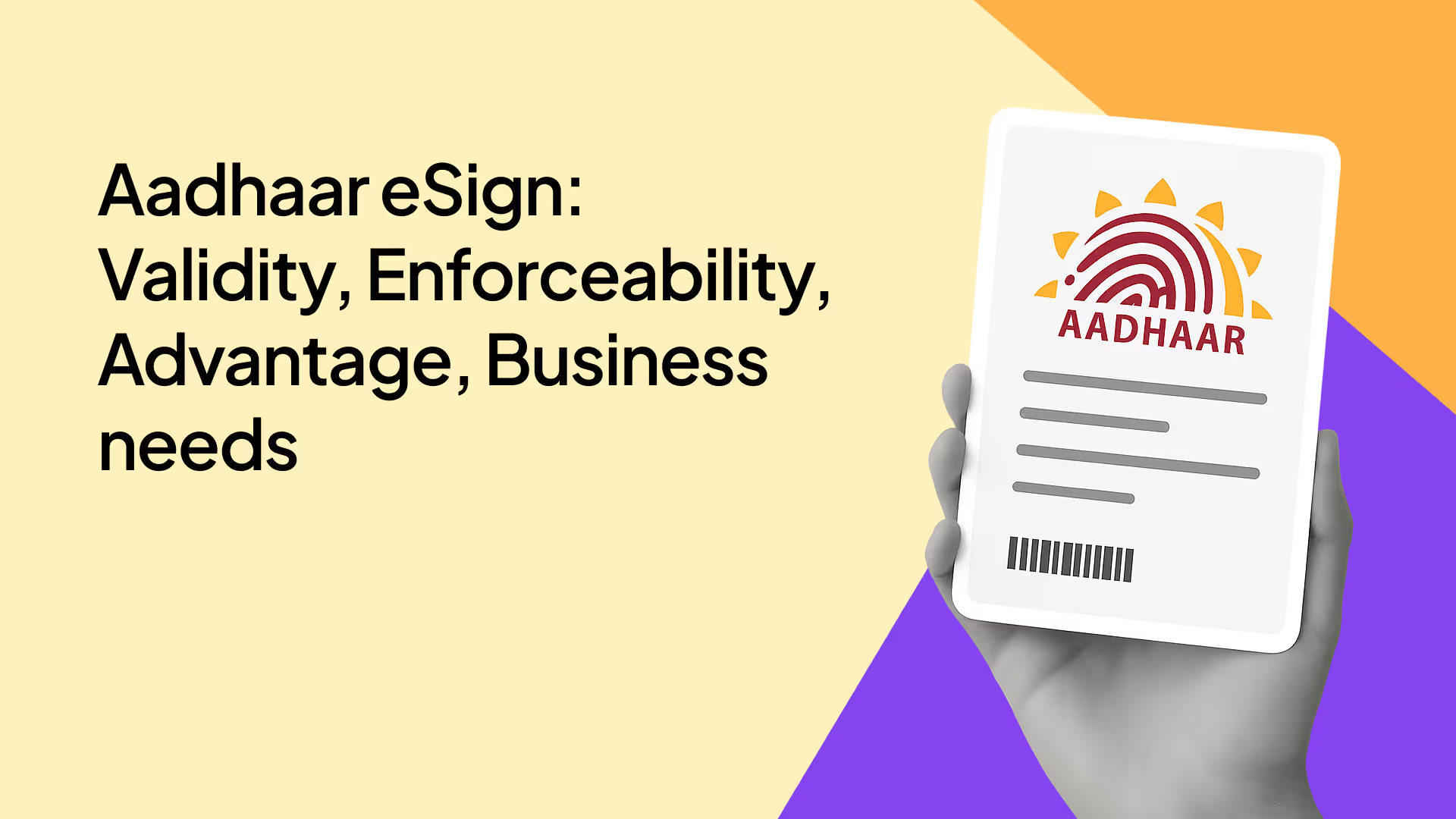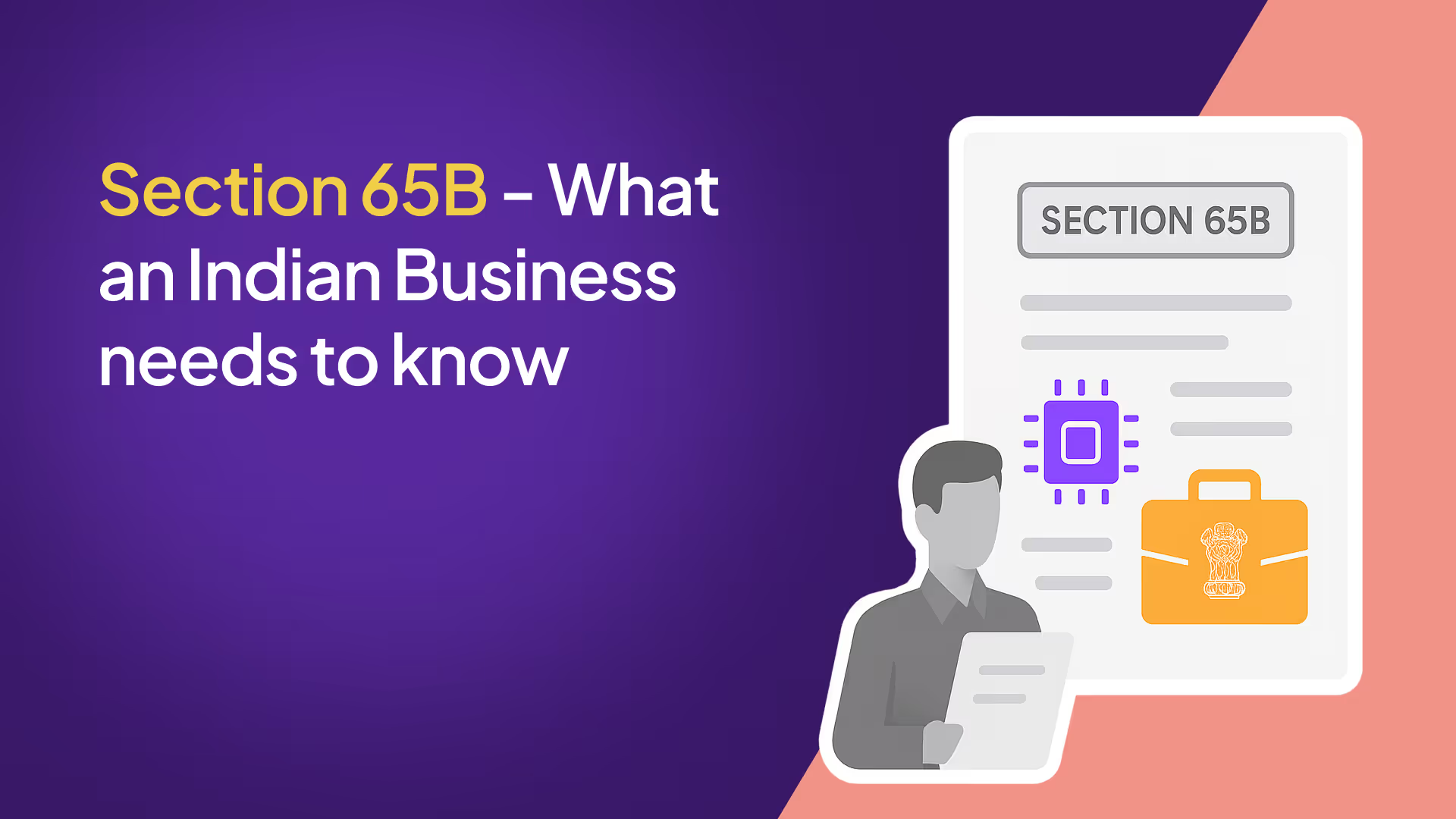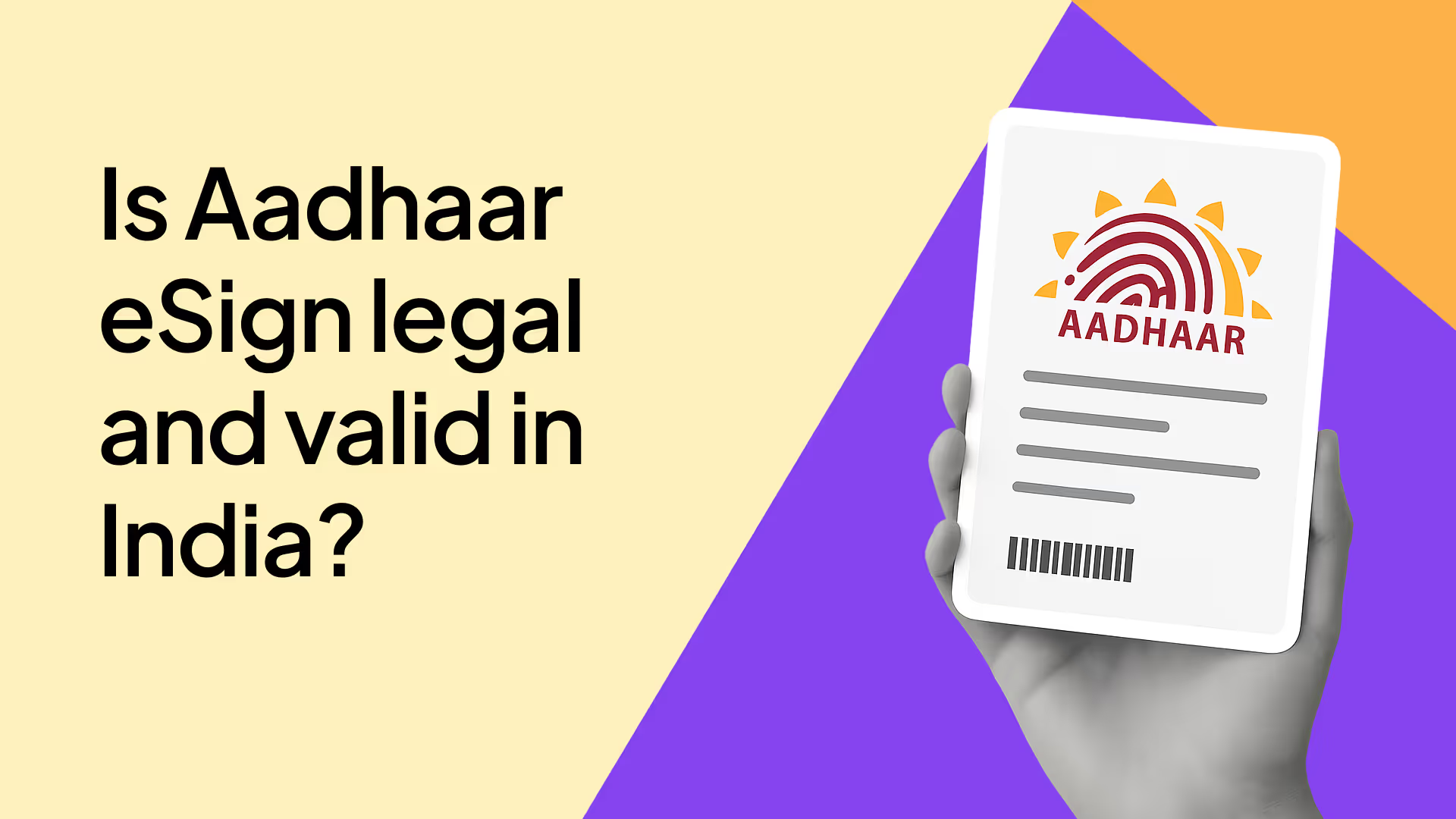If you want to know the basics of Aadhaar eSign and how digital signatures function, you can refer to our previous post.
Before we delve into the benefits of using Aadhaar eSign, let’s take a small step back and identify the problems in a world without Aadhaar eSign.
The business problems caused by paper based agreements:
Executing paperwork (agreements, forms declarations etc.) is the most critical step in successfully closing a transaction and commencing a commercial relationship with a customer, merchant or agent.
However, despite the critical importance of paperwork - this process is conventionally a logistics and compliance nightmare.
We recently spoke to Dhairya Shah, Head of Projects at Axis Finance about how they executed physical paperwork for Business and Personal Loans.
This is the process he described:

Is your head spinning yet?
And this is just one particular workflow. Depending on the type of document and use case - execution workflows change across verticals and use cases. Axis Finance - themselves had different workflows for other loan products!
For most medium to large businesses (like Axis Finance above) – this process needs to be repeated many, many times during the course of the year to keep business flowing. Depending on the size and the nature of the institution, this can easily mean hundreds, thousands and even lakhs of documents a month!
This creates severe business problems:
- High Turnaround times: Even after companies and their customers are aligned - the turnaround time for paperwork can delay business relationships and transactions by days, if not weeks
- Loss of productivity for teams: When team spend a significant chunk of time ensuring documents are printed, ensuring the pages are in order, verifying that correct information is filled in, fixing up and following up on appointments with signers etc. it stops them from focusing on the important aspects of their job
- High costs of maintaining paperwork: You can’t just throw your agreements out after they are executed! You need to store them safely (often in a warehouse), inventorise them for future reference, transport them to storage etc.
- Risk of damage to critical documents: Your agreements are the foundation of your legal rights. Except on paper - they can easily get damaged or destroyed by simple things like water
- Bad customer experience: Think about the last time you had to sign a rent agreement or paperwork for your Bank. How did you feel?
Why are documents still on paper?
In the age of Microsoft Word - why are documents still printed?
Commercial documentation - agreements, forms etc. fundamentally exist to build legal and commercial trust in a transaction. But they can only do that if there is a signal of agreement. This “signal of agreement” is usually what we know as a signature.
And that’s why most commercial documents are physical. They need a signature.
So the first step to digitizing paperwork (and eliminating the business problems cited above) is eliminating the physical signature.
Why the old type of digital signature doesn’t work
For a long time, the concept of digital signatures was limited to USB-token- based electronic signatures known as Digital Signature Certificate Tokens or DSC Tokens.
But DSC Tokens are a big problem:
- Procuring a DSC Token is hard: Signers need to go through multiple hoops - including payment, ordering and Video KYC to order a DSC Token. And after they order they need to wait for a few days to receive it
- Signing with a DSC Token is hard: Signing with a DSC token is a multi-touch process involving installation of clients, remembering PINS etc. It requires a very specific level of tech literacy to actually sign a document with one. (seriously, even tech savvy people need to learn how to use a DSC token). The process is also error ridden - DSC Tokens are notorious for not working randomly.
- DSC tokens require physical devices: A DSC Token is a physical USB device. If a signer doesn’t have one when they need to sign - they can’t digitally sign! Who carries a USB device around wherever they go?
- DSC tokens work on laptops/desktops only: India is a mobile-first country . That’s not a cliche but a hard fact. What’s the use of digital signing if it can’t be done on the primary digital device used by most connected Indians
The above problems made DSC tokens suitable ONLY for a tiny sliver of use cases that apply only to a handfull of professionals.
And even these professionals complain about it - just ask a CA or an IP lawyer about their experience with a DSC Token.
How will a business ever digitize signatures if it’s customers, business partners, vendors etc. don’t have a DSC Token?
That’s the gap Aadhaar eSign fixes.
Why Aadhaar eSign is a gamechanger for digital signing
Introduced in 2015, Aadhaar eSign allows anyone to sign a document if they:
- Possess an Aadhaar number
- Have a phone or email linked to that number
That’s it.
As of 2019, more than 7 crore Aadhaar eSigns had been used since their introduction in the IT Act in 2015.
With Aadhaar eSign enabling a scalable, democratic process for all Indians to sign electronically – businesses now have a potent tool to remove the first obstacle in the journey to going paperless – the signature.
But an electronic signature is not enough.
eSign is the first - but not the only step
In a legal construct - a document is executed when all parties sign it.
But in the practical world - this is not the case. A true “execution” process is completed when the entire logistics and compliance needs of the parties undergoing that process are met.
So for a complete execution of, say, a loan agreement - it’s not enough to simply get the signature. You will also need to:
- Affix stamp paper for payment of stamp duty
- Ensure contracting conventions like rubber seals for authorized signatories, signing on every page, collecting supporting documents like PAN Card or Board Resolution are met
- Verify the signer’s identity - and making sure they are a real person!
- Fill in the blanks on templates before they are sent out for signing - and ensuring the filled in information is correct
- Make a copy of the signed document available to all parties
- Store the signed document in a secure and easily accessible way for future reference
- Ensure the security of stored documents within the company
This is just an illustrative list. I am sure many readers will have additional steps to add.
So what’s the way out?
Aadhaar eSign - the UPI of digital documentation in India
The mistake many people make is that they see Aadhaar eSign as the only step to digitizing paperwork. But that is incorrect, Aadhaar eSign is an essential step to digitizing paperwork for a business. But it’s only the first step.
In that sense, Aadhaar eSign is like a UPI.
The introduction of UPI revolutionized payments in India. With UPI, making a payment digitally became much easier than withdrawing cash from an ATM, cutting a cheque or using a debit card.
But UPI doesn’t by itself magically solve all the problems with payments in India.
Instead, UPI has been used as a launchpad by fintechs, NBFCs and Banks to build a host of innovative tools and products as additional layers.
So actually, UPI was not just a first step. It is also a bridge to greater innovation and deeper technology that can solve more holistic problems.
While UPI was not, by itself, sufficient to solve the entirety of problems in payment. Its existence was a necessary precondition for a product ecosystem that can.
That’s how Aadhaar eSign is like UPI.
Aadhaar eSign has provided a bridge to a digital document world.
Companies can now build products and tools that can solve for all touchpoints of document execution - because they know that the all-important first step i.e the signature has been taken care of by Aadhaar eSign.
That’s why you now have tools that allow you to, among other things:
- Digitally stamp documents
- Digitally affix rubber authorized signatory seals
- Automatically fill in templates
- Automated the entire paperwork execution process
The list can go on and on.
But the point is - thanks to the bridge provided by Aadhaar eSign, Indian businesses now have access to solutions that allow them to digitize ALL processes and touch points related to document execution - eSign and beyond!
How Aadhaar eSign help businesses?
The digital document world enabled by Aadhaar eSign can unlock many deep, structural benefits for your business:
- Quicker turnaround time for transactions: While it may sound cliche - it’s true - time is money! With paper - your commercial relationships can get delayed by days and weeks. Through a digital process - they can be kickstarted in minutes.
- More productivity: Repeating the cliche - time is money. The more time teams spend on processing and verifying paperwork - the less time they’re spending on servicing actual customers or partners!
- Better legal security: Digitally signed documents are inherently safer from tampering. Similarly they cannot be destroyed by hazards like fire, water or other disasters. Finally - it’s much harder to make mistakes in filling up electronic documentation - because this can now happen automatically.
- Enhanced customer experience: Probably the most important. Rather than spending their first moments with you being annoyed by the fact that they need to run around to courier documents to you - your customers and business partners will now be happy that they can close paperwork with you in a few minutes. How’s that for a first impression?! In pandemic times - the digital experience is also a critical safety measure!
Remember the example of Axis Finance’s physical execution process?
Well here’s their new digital execution process after they went digital with their paperwork:

So the only question that remains for you is this - will your business capitalize on the new paperless world enabled by Aadhaar eSign or not?
If you still have questions, you can check our Aadhaar eSign FAQ page and clear your doubts. Alternatively, you can also check out Digital Stamping FAQ, Virtual Sign FAQ get more insights.
















.avif)
